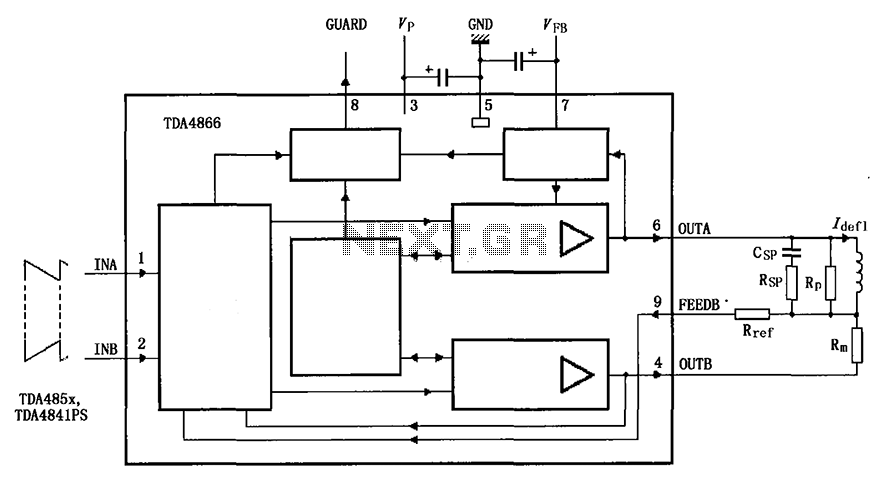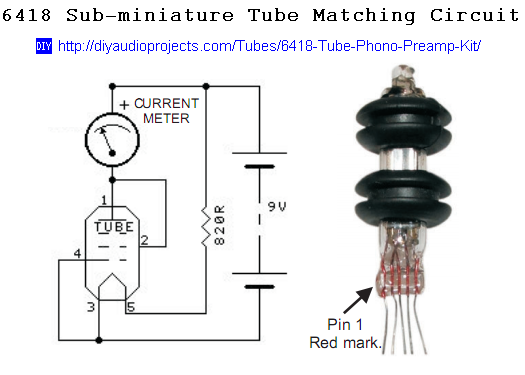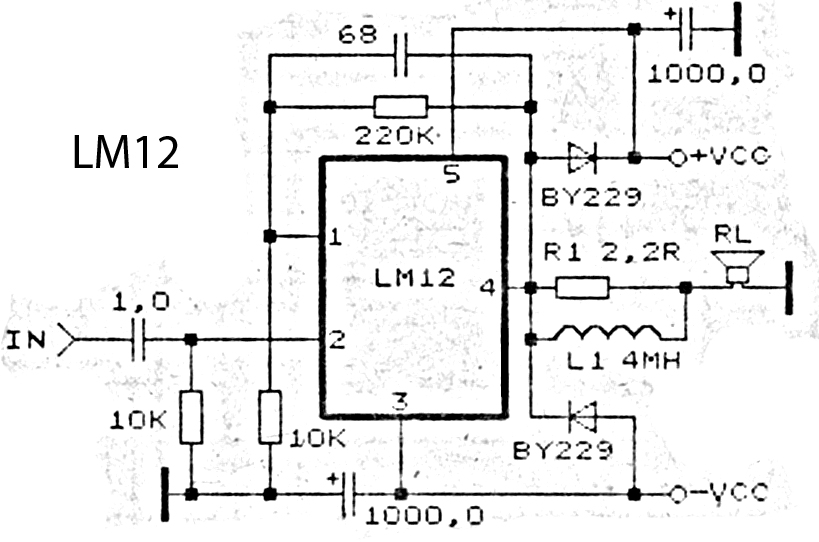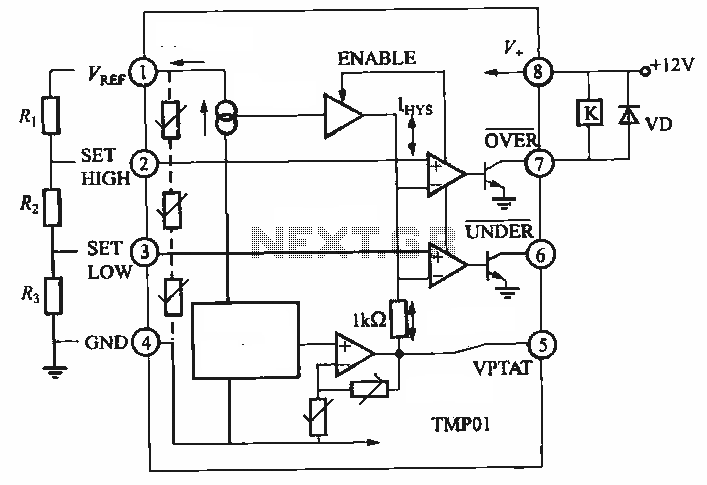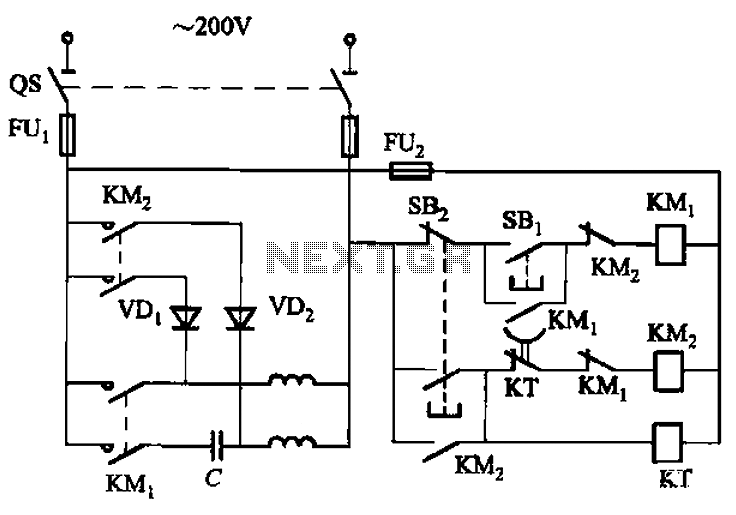
High-performance DC amplifier driving circuit AP500A-01
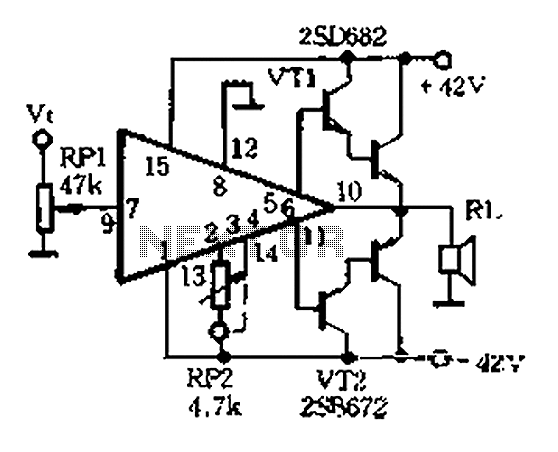
The AP500A amplifier offers numerous advantages, providing unmatched superiority in stereo applications. It can utilize various amplifier configurations, including OTI, CI, rK, BTL, class AB, and super CP. The typical DC amplifier module for the AP500A is illustrated in Figures 3-21 and 3-22, where it is employed for voltage amplification and drives amplifier tubes VT1 and VT2, which handle current amplification tasks. Figure 3-22 features a VMOS FET amplifier tube, which exhibits characteristics similar to electron tubes. The AP500A's design allows it to leverage the unique treble and powerful bass capabilities of the VMOS tube, equipped with DC FET input. Figure 3-23 displays the amplifier's power supply circuit. When powered by a 42V supply, the output power can reach up to 200W, while a dual-port supply of 28V can yield an output power of 90W. The AP500A demonstrates exceptional voltage adaptability, operating within a recommended voltage range of 42V to 28V without requiring extensive debugging of the amplifier tube's working status. Figures 3-21 and 3-22 show an adjustable resistor connected in a dotted line, allowing for the adjustment of the working conditions of amplifier tubes VT1 and VT2 (e.g., B, AB, or class A). Additionally, small auxiliary components can be connected to the peripheral circuit to enable VT1 and VT2 to enter the super CP working state. Given that the power amplifier tubes are responsible for significant current amplification and power consumption, it is essential to incorporate auxiliary radiator fins for effective heat dissipation.
The AP500A amplifier is designed to cater to a variety of audio amplification needs, making it an ideal choice for high-fidelity audio systems. The versatility in amplifier configuration allows for tailored applications based on specific user requirements. The use of VMOS FET technology provides a modern solution to traditional tube amplification, combining the warmth of tube sound with the efficiency of solid-state devices.
The circuit design, as depicted in the provided figures, emphasizes a robust architecture that supports both voltage and current amplification, ensuring that the amplifier can deliver high output power while maintaining audio quality. The adjustable resistor feature allows for fine-tuning of the amplifier's performance, accommodating different types of audio signals and speaker configurations.
Moreover, the inclusion of auxiliary radiator fins is a critical consideration in the design, as it addresses thermal management, which is vital for maintaining the longevity and reliability of the amplifier under high load conditions. The ability to operate within a wide voltage range enhances the AP500A's adaptability, making it suitable for various power supply scenarios without compromising performance. This makes the AP500A a highly effective and efficient solution for audio amplification in both professional and consumer applications. Because so many AP500A having the above advantages, the use to which the stereo has incomparable superiority. AP500A use can be made of OTI, ) CI a, rK, BTL, class AB, super CP I, CPI and other distinctive © amplifier circuit shown in Figure 3-21, Figure 3-22 is AP500A the typical DC amplifier module using a circuit diagram 6 wherein AP500A amplifier for voltage amplification and drives VT1, VT2 amplifier tube, VT1, VT2 as amplifier current amplification tasks Figure 3-22 uses VMOS FET amplifier tube, having an electron tube characteristics VM () S tube amplifier with DC FET input AP500A equipped with, can fully play VMOS tube Ix, amplifier unique treble slim, powerful bass special point © Figure 3-23 is present amplifier power supply circuit, FIG. 3 -21 3-22 when using 42V power supply, output power up to 2, oow when 2 port power supply with disabilities 28V, 90W 2 can output power ratio.
Since AP500A extremely wide voltage adaptability, so recommended within the operating voltage range ( 4zv including, 28V), the circuit can work without debugging port working status amplifier tube stringent requirements, according to FIG. 3 21, Figure 3-22 adjustable resistor connected in dotted line shown to set the end of the longevity amplifier tube VTl.VT2 working condition (eg; B, AB or class a class can also be connected to a small auxiliary element in the peripheral circuit, so VTlVT2 enter the working state super CPI) port Further, since the power amplifier tube amplifier for the last stage is a current amplification, large power consumption, so the need to use an auxiliary radiator fins.
The AP500A amplifier is designed to cater to a variety of audio amplification needs, making it an ideal choice for high-fidelity audio systems. The versatility in amplifier configuration allows for tailored applications based on specific user requirements. The use of VMOS FET technology provides a modern solution to traditional tube amplification, combining the warmth of tube sound with the efficiency of solid-state devices.
The circuit design, as depicted in the provided figures, emphasizes a robust architecture that supports both voltage and current amplification, ensuring that the amplifier can deliver high output power while maintaining audio quality. The adjustable resistor feature allows for fine-tuning of the amplifier's performance, accommodating different types of audio signals and speaker configurations.
Moreover, the inclusion of auxiliary radiator fins is a critical consideration in the design, as it addresses thermal management, which is vital for maintaining the longevity and reliability of the amplifier under high load conditions. The ability to operate within a wide voltage range enhances the AP500A's adaptability, making it suitable for various power supply scenarios without compromising performance. This makes the AP500A a highly effective and efficient solution for audio amplification in both professional and consumer applications. Because so many AP500A having the above advantages, the use to which the stereo has incomparable superiority. AP500A use can be made of OTI, ) CI a, rK, BTL, class AB, super CP I, CPI and other distinctive © amplifier circuit shown in Figure 3-21, Figure 3-22 is AP500A the typical DC amplifier module using a circuit diagram 6 wherein AP500A amplifier for voltage amplification and drives VT1, VT2 amplifier tube, VT1, VT2 as amplifier current amplification tasks Figure 3-22 uses VMOS FET amplifier tube, having an electron tube characteristics VM () S tube amplifier with DC FET input AP500A equipped with, can fully play VMOS tube Ix, amplifier unique treble slim, powerful bass special point © Figure 3-23 is present amplifier power supply circuit, FIG. 3 -21 3-22 when using 42V power supply, output power up to 2, oow when 2 port power supply with disabilities 28V, 90W 2 can output power ratio.
Since AP500A extremely wide voltage adaptability, so recommended within the operating voltage range ( 4zv including, 28V), the circuit can work without debugging port working status amplifier tube stringent requirements, according to FIG. 3 21, Figure 3-22 adjustable resistor connected in dotted line shown to set the end of the longevity amplifier tube VTl.VT2 working condition (eg; B, AB or class a class can also be connected to a small auxiliary element in the peripheral circuit, so VTlVT2 enter the working state super CPI) port Further, since the power amplifier tube amplifier for the last stage is a current amplification, large power consumption, so the need to use an auxiliary radiator fins.
Warning: include(partials/cookie-banner.php): Failed to open stream: Permission denied in /var/www/html/nextgr/view-circuit.php on line 713
Warning: include(): Failed opening 'partials/cookie-banner.php' for inclusion (include_path='.:/usr/share/php') in /var/www/html/nextgr/view-circuit.php on line 713
